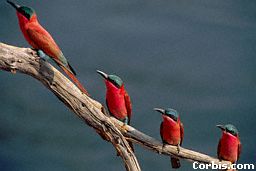| Midwinter Festivals |
 |
 |
| Everyone loves a holiday, and during the months of January and February, there are several midwinter celebrations in the spirit of a carnival, with merrymaking, jazz bands, dancing, parades, and much pageantry. The most important festival in the South is Carnival, which begins with Twelfth Night |
| Revels and ends with Mardi Gras on Shrove Tuesday. In the North, winter carnivals have become the favorite diversion for those seeking a midwinter |
| holiday. They provide not only an outlet for people who enjoy sporting events, but are a great boon for winter-bound inhabitants of little towns and villages in which they are held. Even though these celebrations are held at the extreme corners of the US, they have several features in common: each elects a Queen or King, a spectacular parade is always an important feature, music is of a gay tempo, and most of the amenities are informal rather than formal. All of these carnivals are shown on television, but in parts only, so we thought it worthwhile to fill in the historical background and give a description of the most important events. Mardi Gras When the sun rises on Shrove Tuesday, the day before the beginning of Lent, New Orleans--a normal Southern city any other time of year--becomes a community devoted exclusively to revelry, noise, and general madness. For this day is Mardi Gras time, and the Crescent Cit climaxes the gaiety of its pre-Lenten celebrations and surrenders itself to torchlight parades, fantastic floats, brassy bands, and pageantry unmatached in the nation. All the streets and public buildings are decorated in the official carnival colors, purple, gold and blue, and business is at a standstill. During the Mardi Gras season, which officially begins with Twelfth Night Revels, some sixty gala balls and countless private parties take place in addition to the parades. The parades themselves are noisy and sometimes ribald spectacles. The first parade is held eleven days before Mardi Gras, and nine of the twenty-five take place at night. To a nonresident, Mardi Gras is a blend of four fast-paced days in an old and exotic city. The events are planned by private social organizations calles Krewes, who produce the parades and finance the balls. Parades are for everybody, but the balls are private affairs, open by invitation only. Aside from the parades, there are number of special events for visitors to see. At high noon comes the fantastic climax to the Carnival. All afternoon people dressed in costume throng the streets and indulge in all sorts of noisy pranks such as parading, tooting, horns, singing and pelting passers-by with confetti and flowers. Flower-decked cars and floats drive through the streets for hours. Nowhere in the world can be seen more glamorous women clothed in beautiful gowns and sparkling with family jewels. The men are masked and dressed in fantastic, colorful costumes. Pancake Day Shrove Tueday is called "Pancake Day" in England. People compete to see who can bake the largest pancake, throw it up into the air and catch it on its way down on the griddle in the same flipping motion for which we call them "flapjacks" in this country. Snow Sculpture Snow sculpture has become a regular carnival feature, and these forms give expression to various winter themes. The snow man of yesteryear has given way to most elaborated and finely carved figures today, many of which are done in beautiful, sparkling colors. Tournament of Roses This famous Pasadena, California, parade was started on January 1, 1886, byt the local Valley Hunt Club. Memebrs decorated their carriage with flowers, creating what the club's charter descibed as "an artistic celebration of the ripening of the oranges in California". (The intent is not dissimilar to that of the ancient Babylonians, who marked the new year with a parade and the sowing of seeds). The Rose Bowl football game became part of the festivities in 1902, but the following year, chariot races (a Roman New Year's event) provided the main sports thrills. It wasn't until 1916 that the football game returned, to become the annual attraction. Since then, New Year's parades, parties, pageants, and bowl games have proliferated and occupy a large share of today's celebrations--the very kinds of secular events that for centuries equated celebrating New Year's with sinning. |